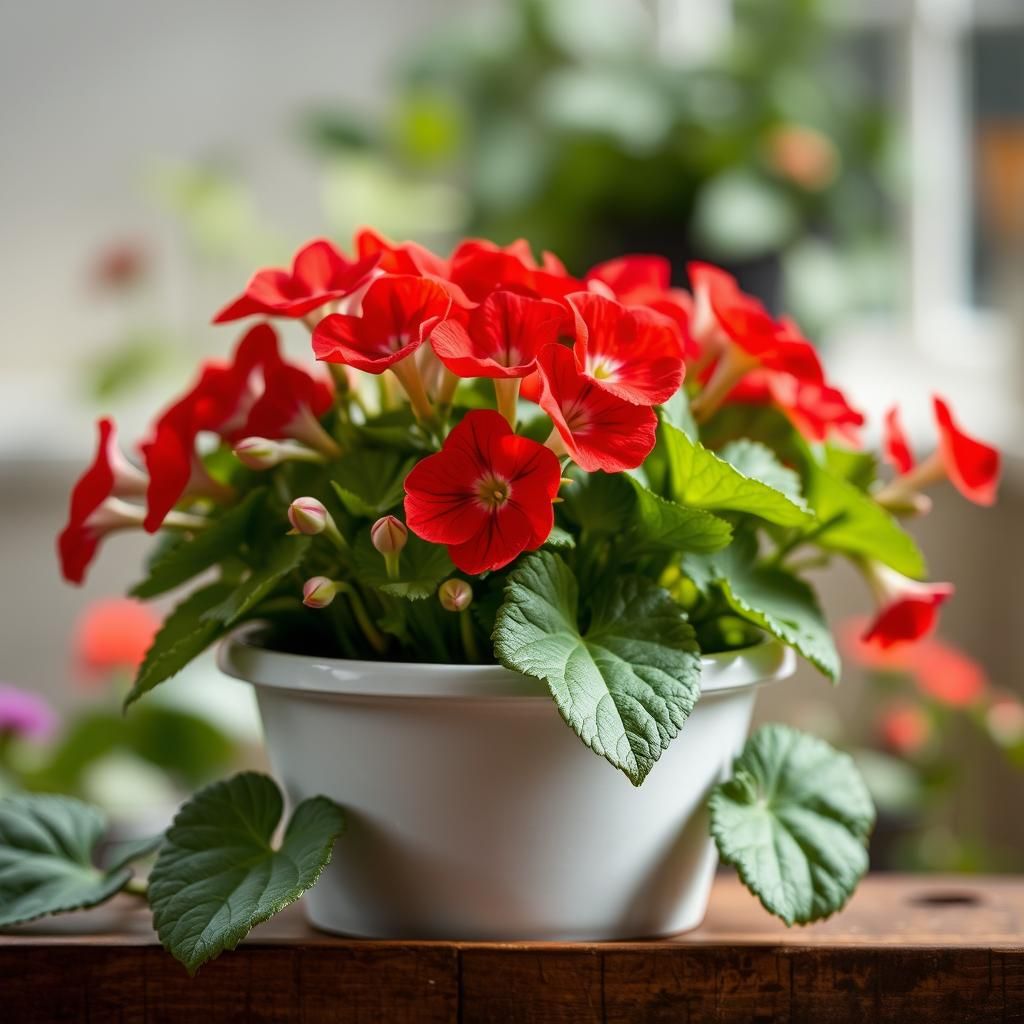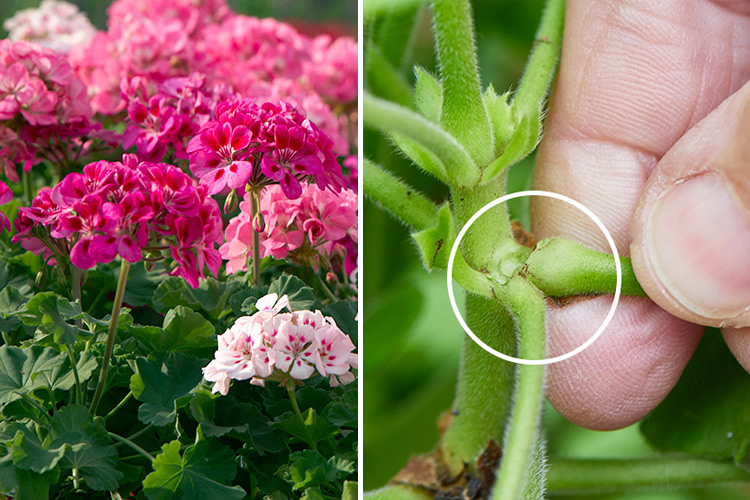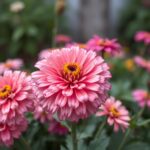The Ultimate Guide on How to Care for Geraniums? Tips for Thriving Plants!

Geraniums are among the most popular flowering plants, renowned for their vibrant colors and resilience. Whether you’re a seasoned gardener or a beginner, caring for geraniums can significantly enhance your garden or indoor space. This ultimate guide will delve into essential tips and practices to ensure these beautiful plants thrive. From selecting the right variety and potting techniques to watering schedules and pest management, we’ll cover everything you need to know. With the right approach, you can enjoy the stunning blooms of geraniums year-round. Let’s explore how to create the perfect environment for these delightful plants!
How to Properly Care for Geraniums
Geraniums, known for their vibrant blooms and ease of care, thrive in well-drained soil and benefit from full sun exposure for at least six hours a day. It is essential to water them deeply but infrequently, allowing the soil to dry out between waterings to prevent root rot. Regular deadheading encourages continuous blooming and maintaining a balanced fertilizer regimen every few weeks supports healthy growth. Finally, protecting geraniums from extreme weather conditions, such as frost or excessive heat, helps ensure their vitality throughout the growing season.
Choosing the Right Soil
Selecting the appropriate soil is critical for your geraniums' health. They prefer a well-draining soil mix that retains some moisture but does not become waterlogged. A combination of potting soil and perlite or sand can create the ideal environment, allowing for adequate aeration and drainage while supporting nutrient retention.
Watering Techniques
Effective watering is vital in geranium care. It's recommended to water geraniums when the top inch of soil feels dry to the touch. Deep watering encourages root growth, while ensuring that excess water drains out of the pot helps prevent issues like root rot. Always avoid letting geraniums sit in standing water, as this can lead to deterioration of plant health.
Light Requirements
Geraniums thrive in bright light, ideally requiring a minimum of six hours of direct sunlight each day. Insufficient light can lead to leggy growth and fewer flowers. If grown indoors, placing geraniums near a south- or west-facing window can provide the necessary sunlight, while outdoor plants should be positioned to receive ample sunlight throughout the day.
Pest Management
Regularly check your geraniums for pests, as these can severely affect their growth. Common pests include aphids, whiteflies, and spider mites. Implementing preventive measures, such as natural insecticidal soaps or introducing beneficial insects, can help manage infestations. Keeping the surrounding area clean and properly spaced plants also minimizes the risk of pest problems.
Fertilization Practices
Fertilizing geraniums is essential for encouraging vibrant blooms and healthy foliage. A balanced, water-soluble fertilizer with an N-P-K ratio of 20-20-20 can be applied every four to six weeks during the growing season. Be cautious not to over-fertilize, as this can lead to burned roots and reduced flowering.
| Aspect | Details |
|---|---|
| Soil Type | Well-draining mix of potting soil and perlite |
| Watering | Water when the top inch of soil is dry |
| Light Needs | At least six hours of direct sunlight |
| Pest Control | Use natural insecticidal soaps and maintain cleanliness |
| Fertilization | Apply balanced fertilizer every 4-6 weeks |
How do you care for potted geraniums?
:max_bytes(150000):strip_icc()/potted-geraniums-getty-0623-958c876bad1043b8a3822f1315a10b32.jpg)

Choosing the Right Potting Mix
To ensure the health of your potted geraniums, selecting an appropriate potting mix is essential. A well-draining soil is vital as geraniums do not thrive in overly moist conditions. A mixture that contains elements like peat moss, perlite, or sand is ideal as it promotes drainage while retaining some moisture. Consider the following components when choosing your soil mix:
- Peat Moss - Retains moisture but allows drainage.
- Perlite - Improves aeration and drainage in the soil.
- Compost - Provides essential nutrients for growth.
Watering Requirements
Watering potted geraniums appropriately is crucial to their growth and blooming. They prefer to dry out slightly between watering sessions. Overwatering can lead to root rot, whereas underwatering can cause the leaves to wilt. Follow these guidelines to properly water your geraniums:
- Check the Soil Moisture - Insert your finger into the soil; if it feels dry up to 1 inch, it's time to water.
- Water Thoroughly - Ensure water seeps out of the drainage holes to promote proper root development.
- Avoid Watering Leaves - Focus on watering the soil to prevent fungal diseases.
Providing Adequate Sunlight
Geraniums thrive in bright, indirect sunlight. Insufficient light can result in leggy growth, while too much direct sunlight can scorch their leaves. To ensure your geraniums receive the appropriate amount of light, follow these steps:
- Choose the Right Location - A south or west-facing window is ideal.
- Rotate the Pot - Ensure even light distribution by rotating the pot every few days.
- Use Sheer Curtains - If placing them where sunlight is direct, consider sheer curtains to diffuse the light.
Fertilizing Your Geraniums
Fertilization plays a significant role in the health and flowering of geraniums. Providing nutrients during the growing season will encourage vibrant blooms and strong growth. Here's how to effectively fertilize your geraniums:
- Use a Balanced Fertilizer - Select a 20-20-20 water-soluble fertilizer for optimal growth.
- Apply Regularly - Fertilize every 4 to 6 weeks during the growing season.
- Dilute Properly - Always follow the recommended dilution rates on the fertilizer label.
Pruning and Deadheading
Regular pruning and deadheading are essential practices to maintain beautiful and healthy potted geraniums. These techniques encourage new growth and enhance blooming. Here are key points to consider:
- Remove Dead Flowers - Pinch off spent blooms to promote continuous flowering and prevent seed formation.
- Trim Leggy Growth - Cut back any long stems to encourage bushier growth.
- Shape the Plant - Regularly trim to maintain the desired shape and fullness of the plant.
Do all geraniums need to be deadheaded?

Deadheading is the practice of removing spent or faded flowers from plants to encourage new growth and prolong blooming. When it comes to geraniums, whether they all need deadheading can depend on several factors, including the variety and growing conditions.
Some geraniums, particularly zonal geraniums (Pelargonium), benefit significantly from deadheading. This process helps to redirect the plant’s energy from seed production back to the development of more blooms. Regularly removing faded flowers can ensure a longer flowering period and maintain the plant's overall appearance.
See also:
However, not all types, such as the wild geraniums (Geranium maculatum), might necessitate deadheading for aesthetic purposes. These varieties tend to be more self-sustaining and can develop seed pods, which can also add interest to the plant. Thus, while deadheading can be beneficial for many geraniums, it is not a strict requirement for all types.
Benefits of Deadheading Geraniums
Deadheading geraniums comes with several advantages that can enhance their growth and flowering season.
- Encouraging Blooming: By removing spent flowers, deadheading helps the plant to focus more energy on creating new blooms rather than producing seeds.
- Improving Appearance: Deadheading can keep geraniums looking tidy and healthy, enhancing the overall aesthetics of your garden or container.
- Reducing Disease Risk: Removing dead or decaying flowers can help prevent fungal diseases and pests that thrive on decaying material.
How to Deadhead Geraniums Properly
To deadhead geraniums effectively, specific techniques should be followed to promote healthy growth.
- Use Clean Tools: Always employ clean, sharp scissors or pruning shears to prevent transmitting diseases.
- Identify Faded Flowers: Look for flowers that are wilted or brown, which indicates that they are ready for removal.
- Cut at the Base: Trim the faded flowers back to the stem, just above the first set of healthy leaves to encourage new growth.
When to Deadhead Geraniums
Timing is essential for effective deadheading of geraniums to achieve optimal results.
- Regular Intervals: Ideally, deadheading should be done every few weeks during the blooming season, particularly in the summer.
- After Flowering: Deadhead promptly after the flowers fade to minimize energy loss and encourage new blooms.
- Seasonal Considerations: As the growing season winds down in late summer or early fall, reduce deadheading as the plants start to prepare for dormancy.
Common Mistakes in Deadheading Geraniums
It is essential to be aware of common errors that gardeners may make while deadheading geraniums.
- Neglecting Timing: Waiting too long to deadhead can result in the plant expending energy on seed production rather than new blooms.
- Over-cutting: Some gardeners may cut back too much of the plant, which can hinder growth. Always deadhead just the faded flowers.
- Ignoring Pest Problems: Deadheading without checking for pests may lead to infestations being overlooked, negatively affecting plant health.
Other Care Tips for Geraniums
In addition to deadheading, other care practices can significantly benefit geraniums.
- Watering Wisely: Ensure that geraniums receive adequate moisture but avoid over-watering, which can lead to root rot.
- Fertilizing: Use a balanced fertilizer during the growing season to provide the necessary nutrients for flowering.
- Providing Adequate Light: Ensure that geraniums receive sufficient sunlight, ideally 6 hours a day, to promote healthy growth.
Questions from Our Readers
How often should I water geraniums?
To keep your geraniums healthy, you should water them once a week. However, the frequency may vary depending on the weather conditions; in hot, dry periods, they might require more water. Always ensure that the top inch of the soil is dry before watering again to prevent overwatering.
What type of soil is best for geraniums?
Geraniums thrive in well-draining soil that is rich in organic matter. A mix of potting soil, perlite, and compost can provide the necessary drainage and nutrients. It's essential to avoid heavy soils that retain water, as this can lead to root rot.
See also:
How much sunlight do geraniums need?
Geraniums prefer to be in full sunlight, ideally receiving about six hours of direct sunlight each day. While they can tolerate partial shade, providing ample light helps promote lush blooms and strong growth throughout the growing season.
How do I fertilize geraniums?
To fertilize geraniums, use a balanced liquid fertilizer every four to six weeks during the growing season. Look for a fertilizer with equal parts of nitrogen, phosphorus, and potassium to support overall growth and enhance blooming. Always follow the recommended dilution rates to avoid burning the roots.

If you want to read more articles like The Ultimate Guide on How to Care for Geraniums? Tips for Thriving Plants!, we recommend you check out our Flowers category.
Leave a Reply
Related Articles